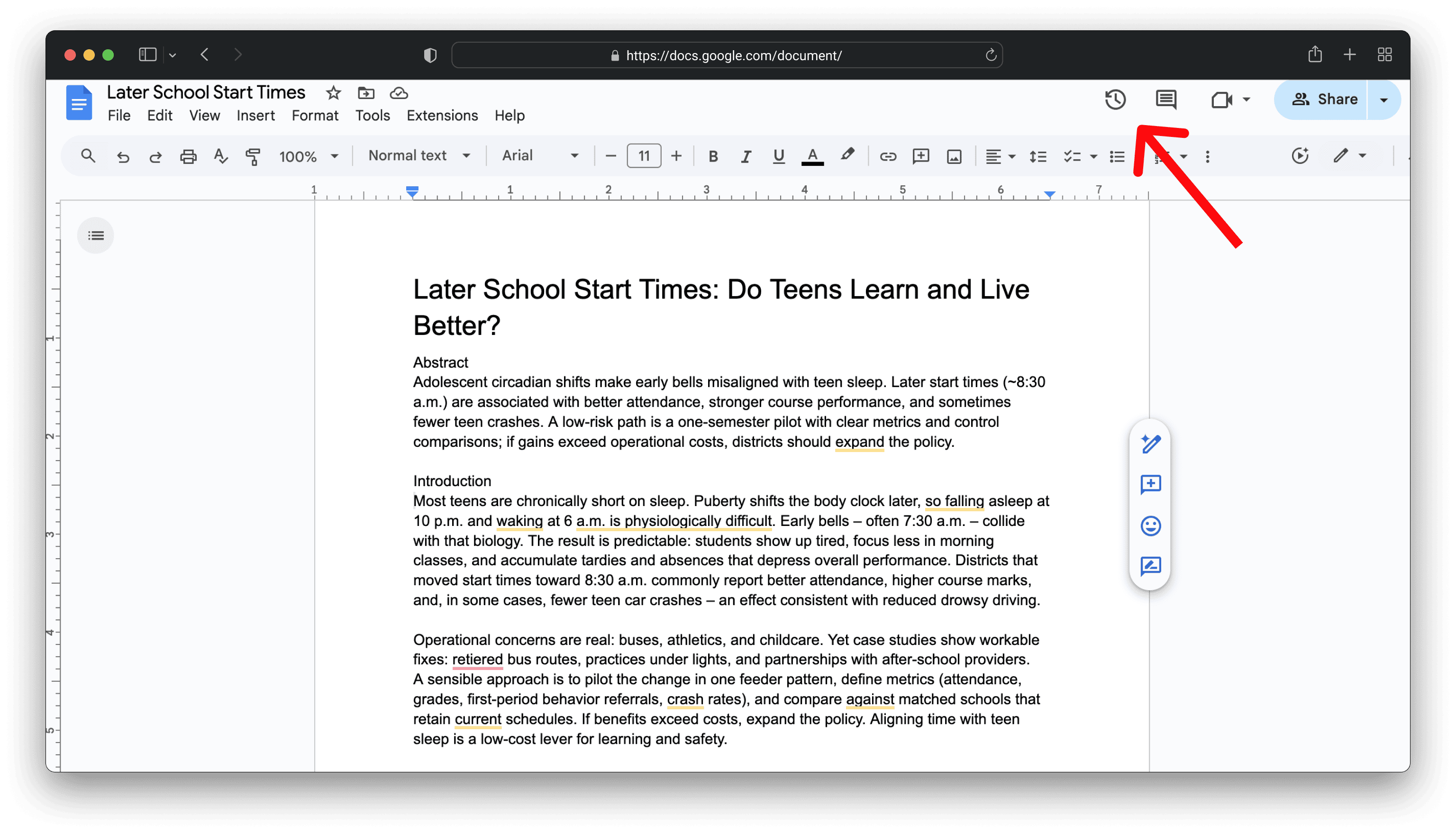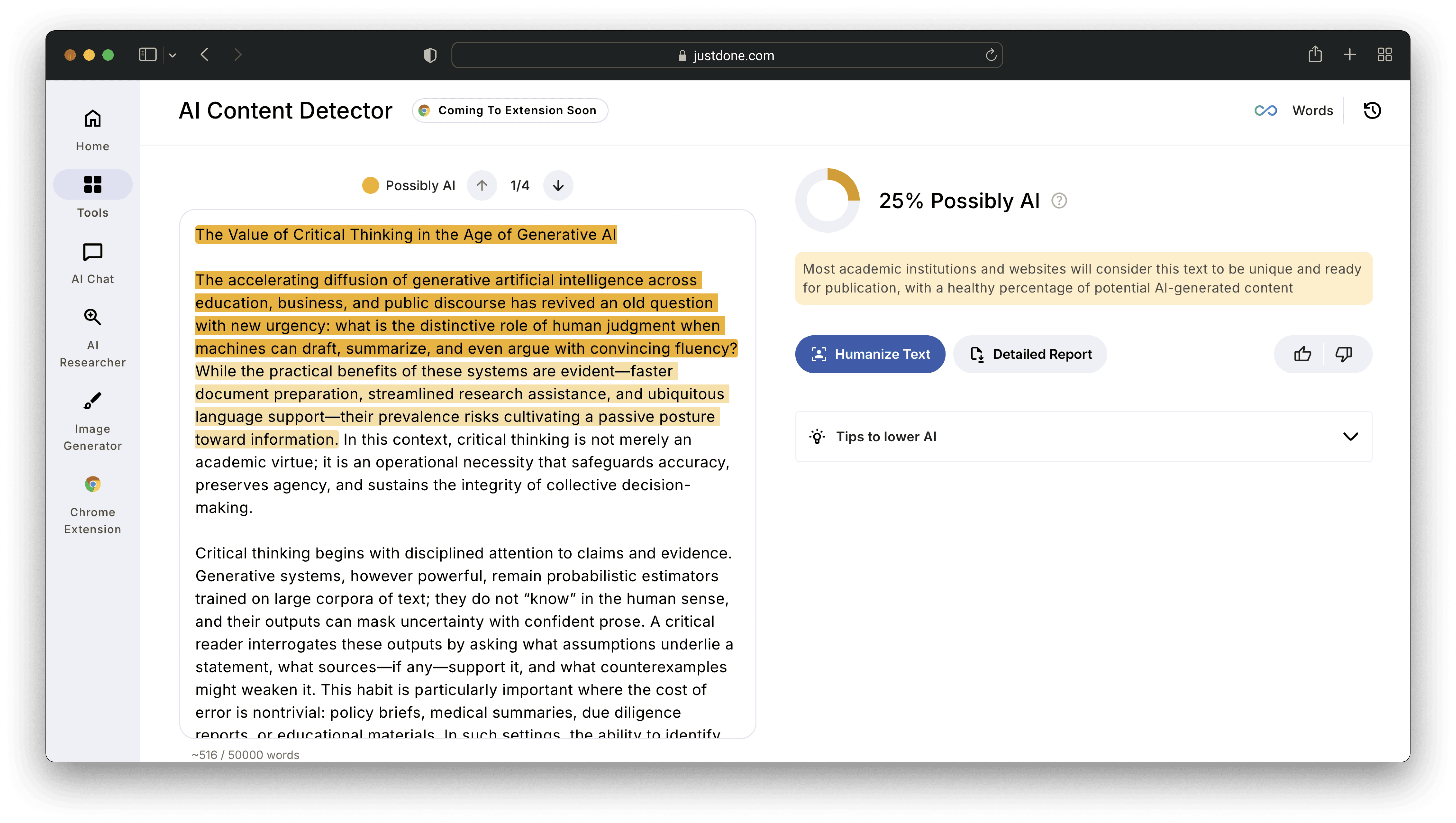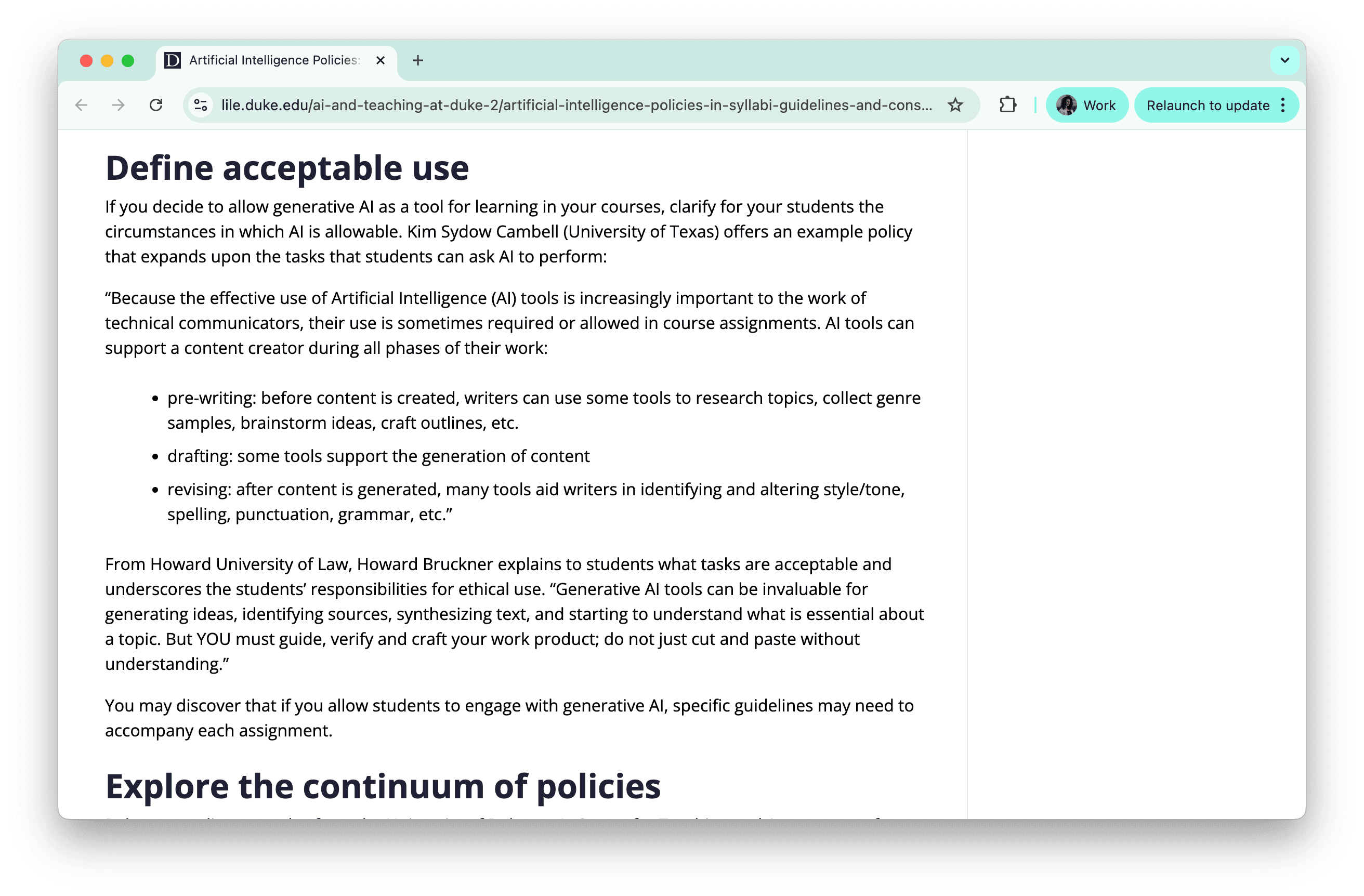Recent surveys show most students use AI tools in some way: a 2025 BestColleges report found 60% of online college students use AI like ChatGPT for coursework, up from the prior year. At the same time, AI detectors aren't perfect. Even established systems acknowledge non-zero false positives: Turnitin reports a document-level false positive rate below 1% (for documents with ≥20% AI writing) and around 4% at the sentence level. This score shows why a human review of process evidence (drafts, notes, version history) matters.
The truth is, even strong human writing can trigger false positives from AI detectors. If this happens to you, don't panic. You can absolutely prove you didn't use AI, and this guide will show you how.
Tips for Fair AI Use
The first thing to do is stay calm and organized. Getting defensive right away can make things worse. Instead, focus on showing how your essay was created step by step.
For example, if you wrote your paper in Google Docs, open the Version History (File → Version history → See version history). This feature shows the exact time and date of every edit, including deleted sentences and added paragraphs. If you started with an outline and gradually developed full paragraphs over several days, this automatically proves your work is authentic. See where to find the history of Google Doc edits on this screen:

If you wrote by hand first, take photos of your notebook pages. If you used a grammar checker or research links, keep screenshots or browser history. All of these create a timeline of your writing process that no AI model could replicate.
How to Beat False AI Accusations
Before responding to your professor, always check your work with a reliable AI detector. I recommend using JustDone. This AI detector is one of the most accurate tools because it compares text against multiple AI models, not just one. You can upload your essay and receive a clear breakdown showing how "human" your writing is, with explanations of why certain phrases may appear AI-like. It looks like this:

If your writing style is very structured or formal, it may trigger false positives. In such case, you can use JustDone's AI humanizer to rephrase parts naturally without changing your meaning. For instance, if your essay states, "The research highlights the importance of modern innovation in educational systems," a humanized version might say, "This research shows how modern ideas are shaping education today." It keeps your point but sounds more like how a real student would write.
AI humanizers are helpful both to understand the issue and to prevent it from happening again.
Communicate Professionally With Your Instructor
Once you've gathered your materials, reach out to your instructor calmly and respectfully. Many professors don't realize how unreliable AI detectors can be. Politely ask for more information about the result. You could say something like:
"I understand my paper was flagged for AI use, but I wrote it myself. Could you share the report or explain what part was flagged? I'd like to understand what might have caused this."
This shows maturity and a willingness to cooperate rather than confront. If possible, attach a few screenshots of your version history or drafts in your first message. Concrete proof often speaks louder than explanations.
For example, one student was accused after an AI detector labeled her paper 98% AI-generated. She presented her Google Docs history showing 11 versions written over three weeks. Her professor reviewed it and immediately withdrew the accusation. Documentation is your best defense.
Escalate the AI Detection Case if Necessary
If your instructor refuses to reconsider, you can escalate the issue to your school's academic integrity office. Most universities allow students to appeal false accusations. Here's a short, respectful email template you can adapt:
Subject: Request for Review – False AI Detection
Dear [Professor's Name or Academic Integrity Officer],
I was recently informed that my assignment for [Course Name] was flagged for AI use. I want to clarify that I wrote the entire paper myself without using any AI writing assistance. I've attached screenshots of my document history, early drafts, and a verification report from JustDone's AI Detector confirming that my text is original.
I kindly request a review of my case and would appreciate an opportunity to discuss it further. Thank you for your time and understanding.
Sincerely, [Your Name] [Student ID] [Course and Section]This approach is straightforward but polite. It shows you're not avoiding responsibility but asking for fairness.
Understand Your School's AI Policy
Each university handles AI differently. For example, Duke University states in its AI policy guide that students can defend themselves by showing drafts, notes, or any proof of independent writing. Besides, they state how exactly students can use AI tools.

If your school doesn't have a clear policy yet, you can refer to official examples like UNE's and ask your department to follow similar procedures. Mentioning an established policy gives your appeal more weight.
Prevent Future AI Detection False Positives
Once your issue is resolved, take a few steps to avoid this from happening again. Always write in platforms like Google Docs or Word 365 that save version histories automatically. Avoid pasting text from AI tools, even as a reference, because some detectors can trace linguistic patterns. And before you submit any important essay, run it through JustDone's AI detector to make sure it reads as fully human.
If your writing tends to be formal or repetitive, the JustDone Humanizer can help smooth it out so it matches your natural tone. Using these tools regularly helps ensure your genuine work is never mistaken for AI again.
Quick Tips to Protect Your Academic Reputation
The thing you should remember is that being falsely accused of using AI doesn't mean you're guilty. It just means AI detection is still imperfect. The best way to prove you didn't use AI is to stay calm, show evidence of your process, and use reliable tools like JustDone's AI Detector and Humanizer to verify your work.
Universities are still learning how to handle AI use fairly. By being transparent, documenting your work, and communicating respectfully, you not only defend your reputation but also help shape a fairer system for other students facing the same challenge.